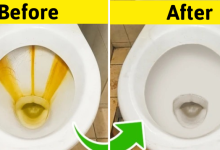
Mattresses can harbor spills, stains, dirt, dust, dust mites and worse—did you know the average person sweats out about half a pint of perspiration each and every night? Gross, I know. The fact is we spend about a third of our lives in bed, so we should make it a pleasant place to be. This comprehensive cleaning, deodorizing and care guide covers everything under the covers.
Vacuum The Mattress

This is an important first step because it removes the dust, dead skin cells, and other debris that land on your mattress and which accumulate en masse over time. Use the upholstery attachment and make sure it’s clean—remember, your vacuum sucks up all kinds of nasties and you don’t want to be depositing any of that on your mattress. (Find out how to clean your cleaning tools here). If your mattress has a foundation, that will need a vacuuming, too.
Deodorize The Mattress

If your mattress has a funky smell? Neutralize those odors with the help of some baking soda, a natural deodorizer. Simply sift some baking soda over your mattress and leave it on for 30 minutes before vacuuming it up with that upholstery attachment. To please your olfactory senses even more, add five drops of your favorite essential oil to the baking soda pre-sift and you’ll get to enjoy that lovely scent for a few nights thereafter.
Spot Cleaning And Stain Removal

Stains generally come in three varieties—protein, tannin, and grease—but here we’ll focus on the one that is most commonly sullying your mattress. From blood to sweat and vomit to urine (not to mention other bodily liquids) protein stains abound in this area of the home.
As with any stain, it’s best to tend to these as soon as possible to avoid them setting in. Start by blotting the stain with a microfiber cloth that you have wet with cold water (never use hot water, as heat sets protein stains), and then blot up the remaining moisture with a dry cloth. Be sure to use a pressing motion, rather than a circular one, to lift the stain rather than further rubbing it in.
With the excess moisture gone, you can remove the stain with a simple DIY solution. Make a paste of salt, baking soda, and water. Rub the solution on the stained area, leave on for 30 minutes, and then and brush it off. Remove any salt and baking soda residue with a cold, wet cloth and allow the area to dry.
For extra stubborn new stains or ones that you were unable to clean right away, upgrade your solution to my favorite homemade stain remover, consisting of two parts hydrogen peroxide to one part dish soap, or a store-bought enzyme cleaner. Apply the solution to the area and gently brush it in with a cleaning toothbrush; leave it on for five minutes and then wipe the area with a cool, damp cloth.
Whatever stain remover you use, just remember to use as little liquid as possible and to ensure your mattress dries completely before you use it again—unless growing your very own mold spores sounds appealing. To speed up the drying process, throw open the windows or use a fan.
A Note About Steam Cleaning And Deep Cleaning
I have access to both a deep cleaner and a steam cleaner, but I never use them on my mattress. As I mentioned earlier, mattresses and liquids don’t mix. With that being said, if you suffer from allergies or are facing some deep difficult mattress stains, these methods may help. If you choose this avenue, I definitely recommend skipping the DIY route and calling in an expert with professional tools.
Cover Up!
Save yourself the trouble next time by investing in a high-quality mattress protector. In fact, many manufacturers recommend them. Because stains can actually void your warranty, so you can rest easy knowing you’re covered!







